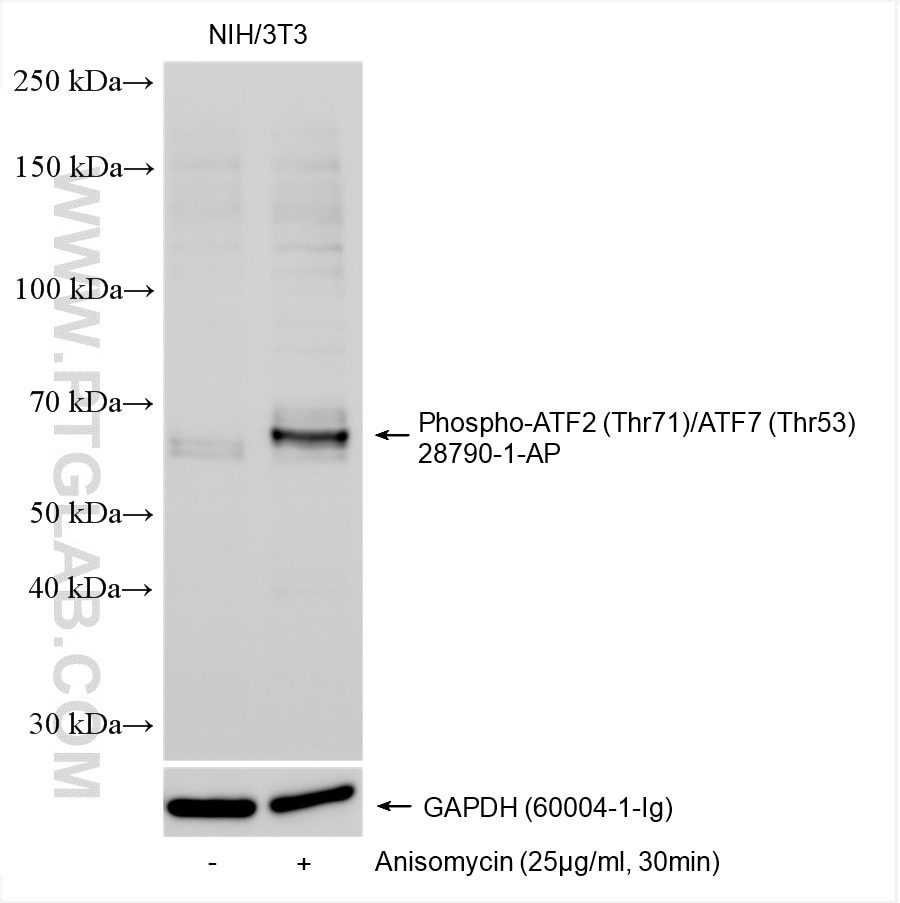Product Information
28790-1-PBS targets Phospho-ATF2 (Thr71)/ATF7 (Thr53) in WB, Indirect ELISA applications and shows reactivity with human, mouse samples.
| Tested Reactivity | human, mouse |
| Host / Isotype | Rabbit / IgG |
| Class | Polyclonal |
| Type | Antibody |
| Immunogen | Peptide Predict reactive species |
| Full Name | activating transcription factor 2 |
| Calculated Molecular Weight | 209 aa, 23 kDa |
| Observed Molecular Weight | 60-70 kDa |
| GenBank Accession Number | BC026175 |
| Gene Symbol | ATF2 |
| Gene ID (NCBI) | 1386 |
| Conjugate | Unconjugated |
| Form | Liquid |
| Purification Method | Antigen affinity purification |
| UNIPROT ID | P15336 |
| Storage Buffer | PBS only, pH 7.3. |
| Storage Conditions | Store at -80°C. |
Background Information
ATF2, also named as CREB2 and CREBP1, contains one bZIP domain and one C2H2-type zinc finger. It belongs to the bZIP family. ATF2 binds to the cAMP-responsive element(CRE), an octameric palindrome. It forms a homodimer or a heterodimer with c-Jun and stimulates CRE-dependent transcription. ATF2 binds DNA as a dimer and can form a homodimer in the absence of DNA. It binds through its N-terminal region to UTF1 which acts as a coactivator of ATF2 transcriptional activity. Stress and growth factors activate ATF2 and ATF7 mainly via sequential phosphorylation of two conserved threonine residues in their activation domain. Distinct protein kinases, among which mitogen-activated protein kinases (MAPK), phosphorylate ATF2 on Thr71 and ATF7 on Thr53, resulting in transcriptional activation. The antibody recognizes ATF2 phosphorylation sites Thr71 and ATF7 phosphorylation sites Thr53.



